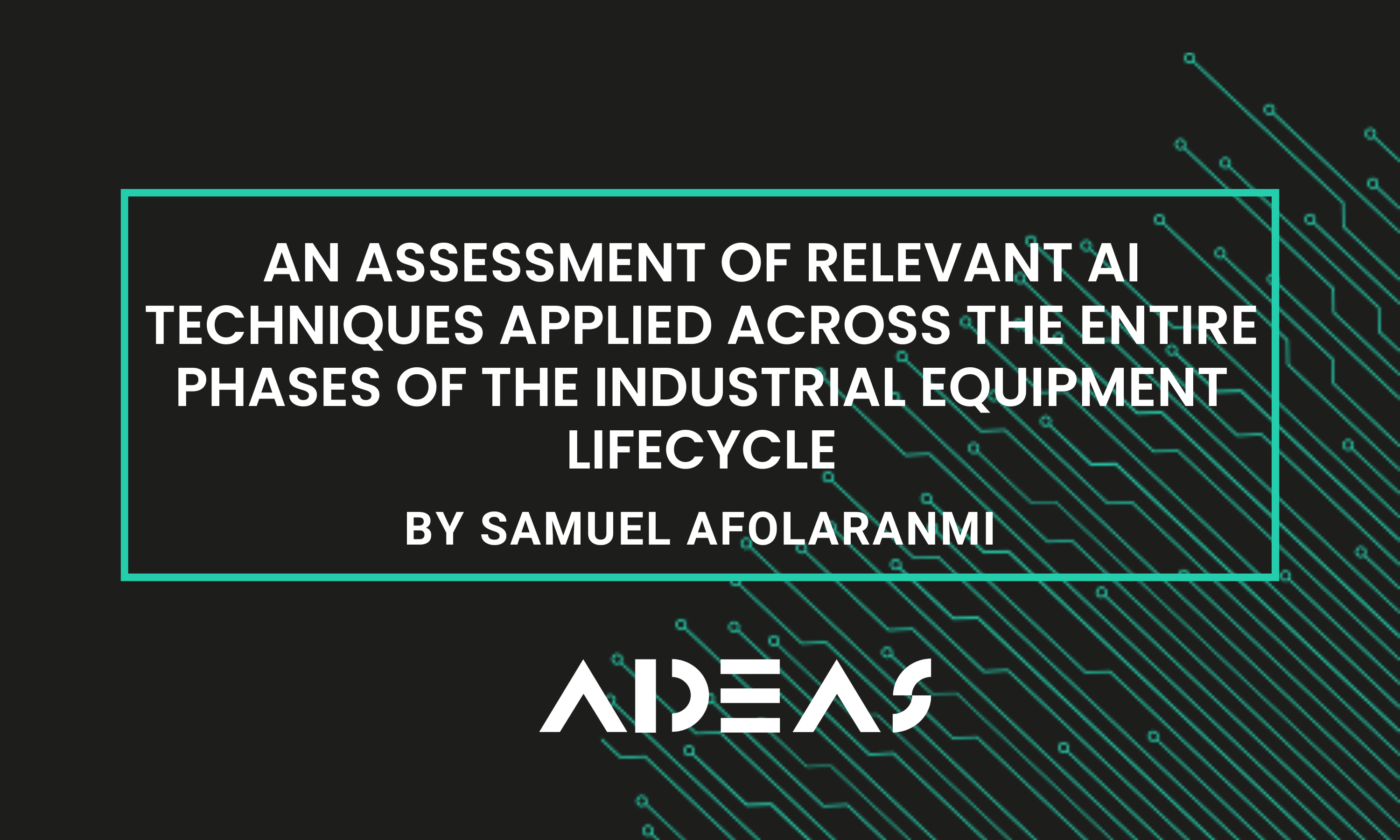An assessment of relevant AI techniques applied across the entire phases of the industrial equipment lifecycle

Artificial Intelligence (AI) is constantly playing a significant role in smart manufacturing as it continues to facilitate the predictability of events, patterns and behaviors within complex and dynamic industrial environments. This article provides an insight into the most relevant AI techniques applied across the entire phases (i.e., design, manufacturing, maintenance and recycling/retrofitting) of the industrial equipment lifecycle.
It opens the door to fully exploring the opportunities and challenges associated with the integration and implementation of AI within industrial processes. This enables technology users to strategically harness the benefits and achieve enhanced productivity and sustainability in smart manufacturing.
Methodology
The review involves an in-depth analysis of 43 articles published over a six-year period (i.e., between 1st January 2017 and 20th May 2023).
This was after filtering more than 4000 articles identified within the different phases of the product lifecycle based on several acceptance/rejection rules as defined by the researchers. The focus was to identify the most common and relevant sets of AI techniques used across the industrial equipment lifecycle and how the AI applied at one stage of the lifecycle enhances the other stages as well as the entire lifecycle.
AI Techniques in Industrial Equipment Lifecycle
A significant mention is the distinction between AI methods and AI techniques. While AI methods (such as Machine Learning (ML), Deep Learning (DL), Reinforcement Learning (RL), Natural Language Processing (NLP) etc.) are foundational standards for building intelligent systems, AI techniques (such as Convolutional Neural Networks (CNN), Generative Adversarial Networks (GAN), Support Vector Machines (SVMs) etc.) are special tools and algorithms used within broader methodologies to solve specific AI problems.
The comprehensive study reveals Modified GAN to be the most popular AI technique applied in the design phase accounting for about 21% in the publications reviewed, while in the manufacturing phase, SVM took the top spot with 22%.
In the maintenance phase, the most significant AI techniques were SVM (10%) and Long Short-Term Memory (LSTM) (4%) for fault diagnosis and prognosis respectively in mechanical components, while Artificial Neural Network (ANN) (16%) and Support Vector Regression (SVR)/SVM/ANN (6% each) were the most predominantly used AI techniques for fault diagnosis and prognosis respectively in electrical/electronic components.
Finally, in the recycle/retrofit phase, ANN accounted for the main AI technique utilized with about 45% share. Although, it must be mentioned that not so many publications in this field were available for the review. It thus presents a great opportunity for further research on how AI is applied and implemented in the domain of recycling and smart retrofitting.
Benefits and Challenges
The major benefits associated with the utilization of AI across the different phases of the industrial equipment lifecycle includes enhanced efficiency and improved product quality, estimation of remaining useful life of equipment, fault diagnosis and prognosis management, machine downtime reduction, cost savings, enhanced decision making and sustainability just to mention a few. Learn more about these benefits with AIDEAS real-world case study in PAMA machines.
However, these benefits also come with some challenges, which includes integration, technical complexities, data privacy and security and ethical considerations. These challenges must be adequately addressed to maximize the benefits of AI application in the industry.
In view of the foregoing, we invite you to take out time to carefully read the full article and dig further into the cutting-edge advancements in AI and its applications in industry. The article has been published online by Springer in the Discover Artificial Intelligence journal.
Want to keep discussing this? Join the AIDEAS community and connect with over 2500 researchers, manufacturers and organizations from all over Europe.
